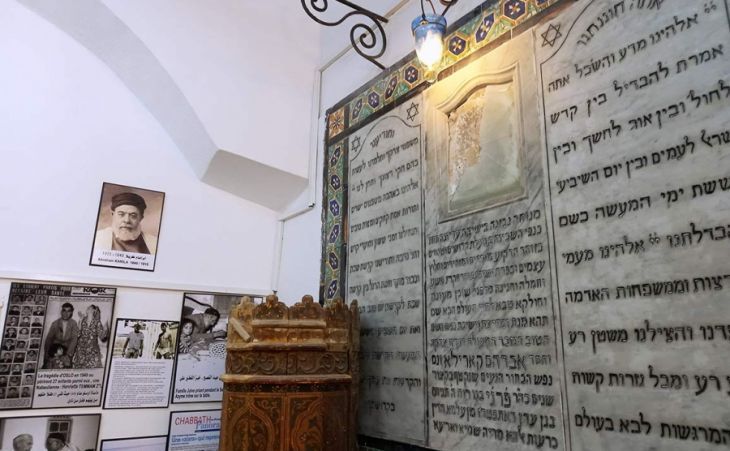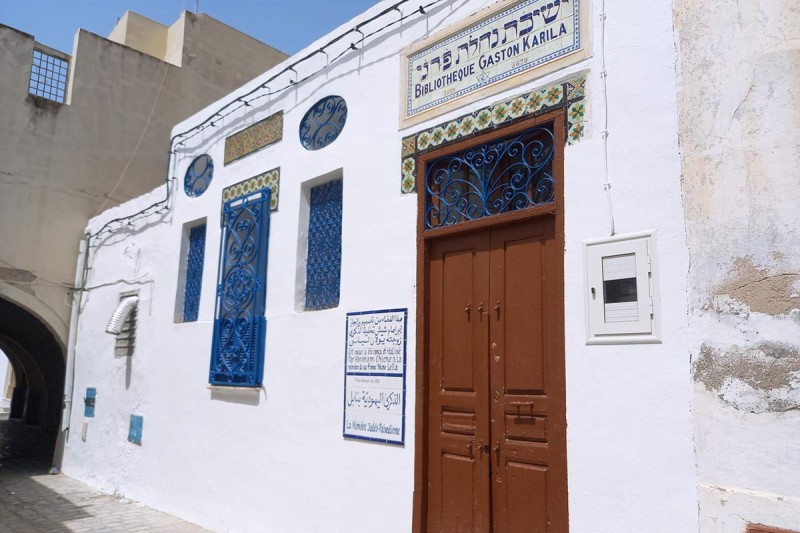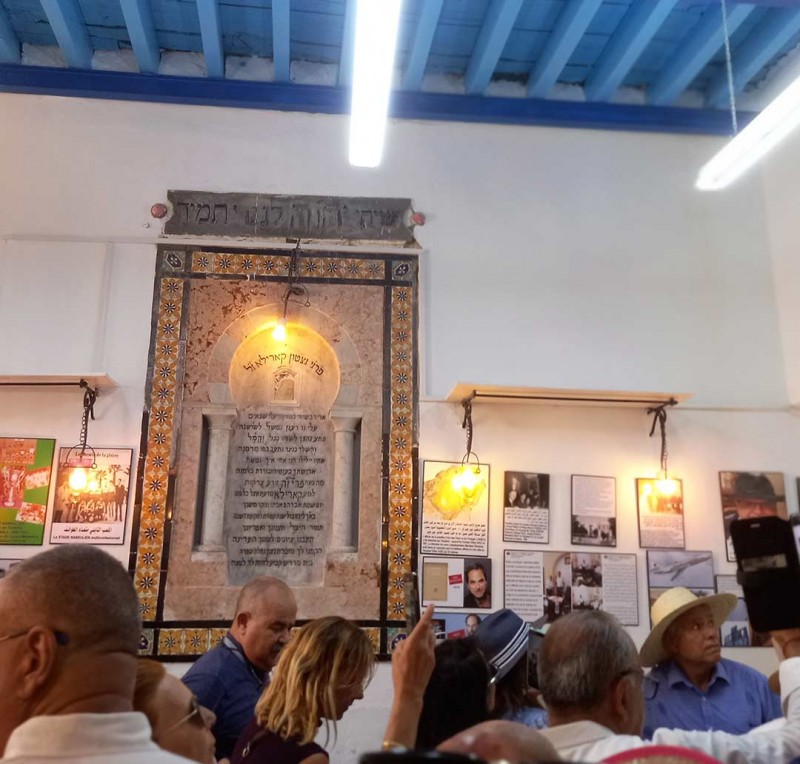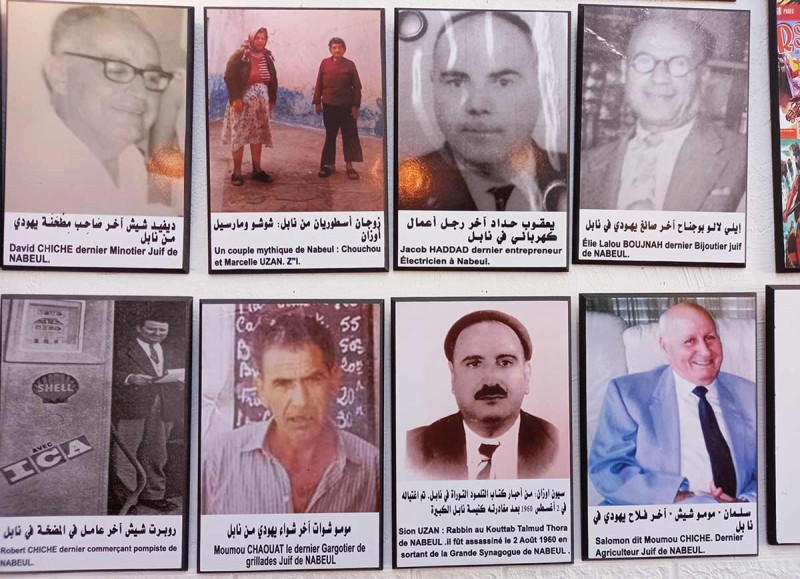Was there a town in Tunisia where a synagogue stood in the centre of the medina, a stone’s throw from the Great Mosque? Where the Jewish community did not live in a specific district, but mixed with Muslims in the same streets of the historical centre? Where it represented up to a quarter of the town’s population?
This town did exist: it was
Nabeul until the 1960s.
The main city of
the Cap Bon region is today a conurbation of 80,000 inhabitants. But in the middle of the 20th century, it was still a small town of 12,000 inhabitants that barely went beyond the limits of the
medina, surrounded by agricultural hamlets.
According to some sources, there were around 3,500 Jewish inhabitants at that time, i.e. more than one in four.
Although this community has now almost disappeared, the old Nabeulians keep a vivid memory of it.
Nabeul, city of good living
In Nabeul, they still talk about
Theodore, a true artist of
the brik – the crispy Tunisian pancake folded in two on a soft-boiled egg – whose small shop was constantly full.
He had no equal when it came to preparing a “Tunisian plate”, a varied salad with pickled vegetables, homemade harissa and a perfectly cooked soft-boiled egg.
Others will evoke Khemaïs, from the small restaurant La Rotonde at the edge of the beach - still in activity - a great meeting place for drunken summer evenings and conviviality between inhabitants of all faiths.
Khemaïs and his wife Noussa
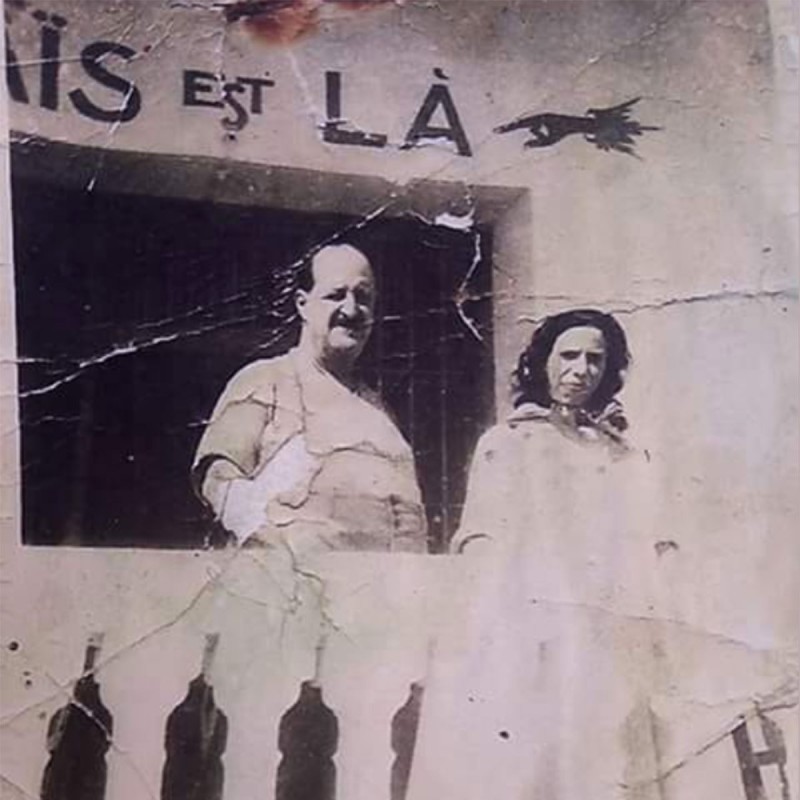
Indeed, like the other Nabeulians, the Jews of Nabeul were not puritanical orthodox but enjoyed the good things in life.
Many of them worked in the food trade, in restaurants and in the hotel business: in particular, you could find them at the head of the Nabeul-Plage hotel (which has since been enlarged), its snack bar Pergola and the restaurant Petite Frégate on the seafront.
Even today, a Jewish Nabeulian, Raymond Haddad, runs one of the best Tunisian restaurants in Paris, the Boule Rouge. A place much appreciated by French politicians…
It is said that the mild and healthy climate of Nabeul had attracted many of these families since the 18th century. Many of them came from Djerba, Tunis or Algeria, for a health stay or a family visit, and decided to settle there.
Some families had their house on the main street of the medina - today’s handicraft souk. All around, Muslims and Jews were born and lived side by side, in the same alleys or dead ends.
One family held a prominent place: the Karilas, originally from Vienna and of Spanish descent. They created many institutions for the community and for the town.
One of them was even mayor until Independence.
A museum of the Jews of Nabeul
Today, Tunisian academics are looking into this little-known memory. At the Faculty of Letters of Manouba, several works have recently been devoted to the former Jewish community of Nabeul.
In the city itself, an small exhibition space has just been created to perpetuate this Jewish-Nabeulese memory. It is located in a building that was abandoned for 40 years: the Gaston Karila Library.
In fact, this “library” was once a Yeshiva, an institution for teaching Torah and Talmud. It is located only a few dozen meters from the Great Mosque.
Albert Chiche, the current head of the community, has collected a number of nostalgic documents. In particular, a whole gallery of portraits: miller, electrician, pump attendant, jeweller, farmer, hairdresser, swimming instructor, shopkeeper, etc.; all trades were practised by these Jewish Nabeulans of the 1960s.
We even find among them an importer of comics, and a hostess of the national company Tunis Air… herself a granddaughter of Theodore, the king of briks!
Espace de la mémoire judéo-nabeulienne: impasse Karila, medina of Nabeul. Opening soon.
